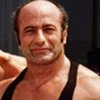Almost everyone agrees that water is good for you and that the biggest problem with water intake is that you don't drink enough. We have all had it drummed into us that we need to drink at least eight glasses of water a day. That it's important to drink water before and during exercise.
That coffee and tea don't count because caffeine can dehydrate our bodies. And that you can't trust your thirst as an accurate measure of when you need water since if you're thirsty you're already dehydrated. Well think again. According to a recent review in the Journal of Physiology, most of these accepted truths seem to be myths.
This review looked at the scientific evidence of the 8*8 mantra, drinking at least eight 8-ounce glasses of water a day, and found that there really was none.
The claimed benefits of taking in that much water each day, including benefits for weight loss, bowels, fatigue, arthritis, mental alertness and headaches, losing weight, preventing constipation, are also mostly unsubstantiated.
Water myths debunked
By the time a person is thirsty that person is already dehydrated. This in fact isn't true and the best measure of how much water to drink is your thirst.
Dark urine means dehydration. Again that's not strictly true either as there are many other factors that can contribute to dark urine.
Caffeinated beverages dehydrate us. As you'd expect much of this is also unsubstantiated. In fact, contrary to popular opinion, a recent study has found that coffee, tea and sodas are hydrating for people used to caffeine and thus should count toward their daily fluid total.
While this review focuses on the validity of the various water myths, no one seriously disputes that getting enough water is crucial. However, fears of dehydration and the constant barrage telling us we don't drink enough water, has led to a mistaken belief that the safe thing to do is to drink as much and as often as possible. But drinking too much water can be hazardous to your health.
Too Much Water?
The reason why over hydrating can be dangerous is that when we consume large amounts of water when exercising, blood plasma (the liquid part of blood) increases, while the sodium concentration in the body fluids decreases, both as a result of the dilution by the water but also because sodium is lost by sweating.
Hyponatremia, or low blood sodium, generally happens after drinking too much plain water and can lead to adverse effects and tissue damage, and interfere with brain, heart, and muscle function.
Severe symptoms can include vomiting, muscle twitching, delirium, seizures, coma and death.
A new review of three deaths of US military recruits highlights the dangers of drinking too much water. Like in sports, the military has traditionally focused on dangers of not drinking enough, especially under conditions often associated with exercise and hot conditions. However, getting overzealous over the need to drink large amounts of water and over-hydrating can have deadly consequences.
Early Symptoms of Hyponatremia
- Confusion
- Nausea
- Fatigue
- Muscle cramps
- Weakness
So How Much Water Should You Drink
My recommendation is to drink when you're thirsty, and if you think you should be drinking more, don't overdo it. As far as drinking water in and around exercise, I've outlined a few simple guidelines that will make sure you're well hydrated without hitting any extremes.
Within an hour or so of training, drink a few glasses of water so you start well hydrated. While training you can drink a glass or so of water for every 15 minutes you train, especially if you're sweating it out.
However, even during times of heavy sweating don't take in more than a quart and half of water per hour. As far as how much your daily intake of water should be, The American College of Sports Medicine that 12 quarts is the maximum amount to drink in a 24-hour period.

